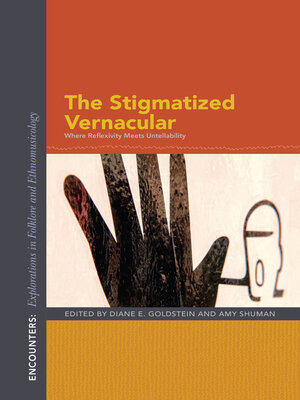The Stigmatized Vernacular
ebook ∣ Where Reflexivity Meets Untellability · Encounters: Explorations in Folklore and Ethnomusicology
By Diane E. Goldstein

Sign up to save your library
With an OverDrive account, you can save your favorite libraries for at-a-glance information about availability. Find out more about OverDrive accounts.
Find this title in Libby, the library reading app by OverDrive.



Search for a digital library with this title
Title found at these libraries:
| Library Name | Distance |
|---|---|
| Loading... |
Reflections on the challenge of studying and discussing subjects society rejects, reviles, or considers unspeakable.
As part of this multilayered conversation about stigma, this volume discusses the relationship between the stigmatized individual and our role as researchers. Here we address our own perspectives as researchers struggling with stigma issues and tellability, as well as scholarly reflexive concerns dealing with what can't be said when working with stigmatized groups or topics.
The disciplinary focus of folklore positions us well to concentrate on the vernacular experience of the stigmatized, but it also propels us toward analysis of the performance of stigma, the process of stigmatization, and the political representation of stigmatized populations. These perspectives come to the fore in this book, as does the multilayered nature of stigma—its ability to reproduce, overlap, and spread, not just in terms of replication but also in terms of the ethnographer's ability to apprehend it and her ability to research and write about it.
As part of this multilayered conversation about stigma, this volume discusses the relationship between the stigmatized individual and our role as researchers. Here we address our own perspectives as researchers struggling with stigma issues and tellability, as well as scholarly reflexive concerns dealing with what can't be said when working with stigmatized groups or topics.
The disciplinary focus of folklore positions us well to concentrate on the vernacular experience of the stigmatized, but it also propels us toward analysis of the performance of stigma, the process of stigmatization, and the political representation of stigmatized populations. These perspectives come to the fore in this book, as does the multilayered nature of stigma—its ability to reproduce, overlap, and spread, not just in terms of replication but also in terms of the ethnographer's ability to apprehend it and her ability to research and write about it.







